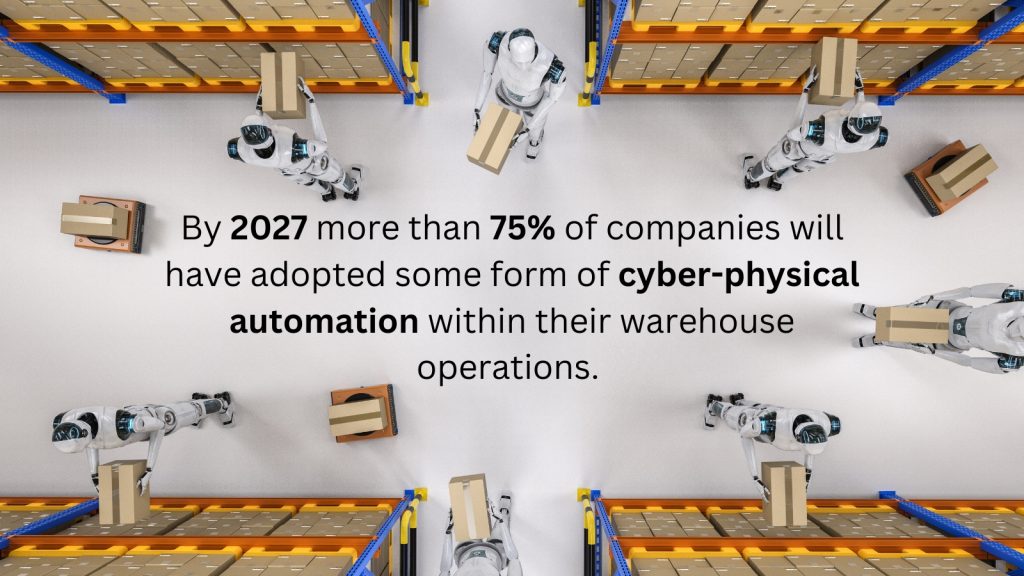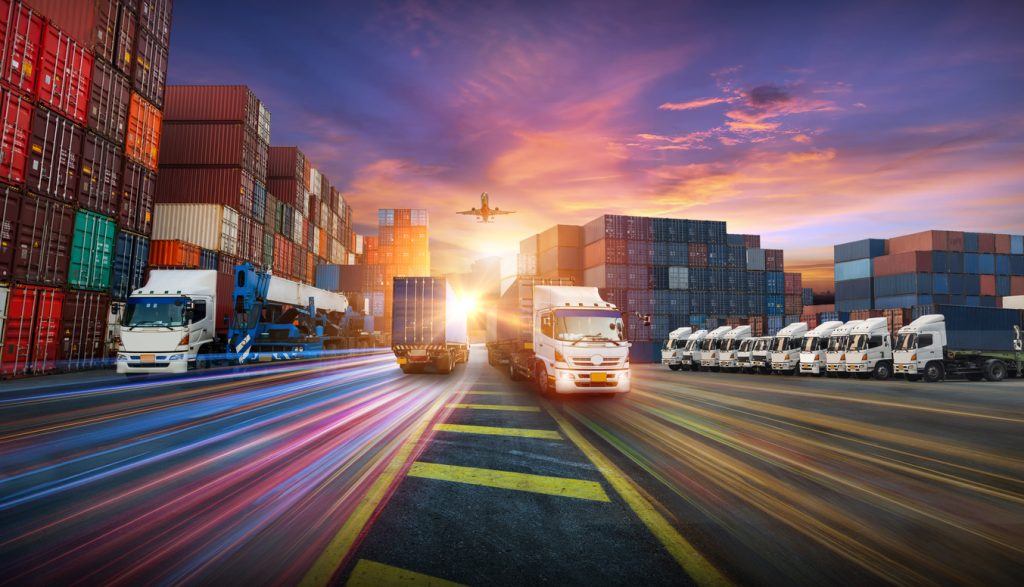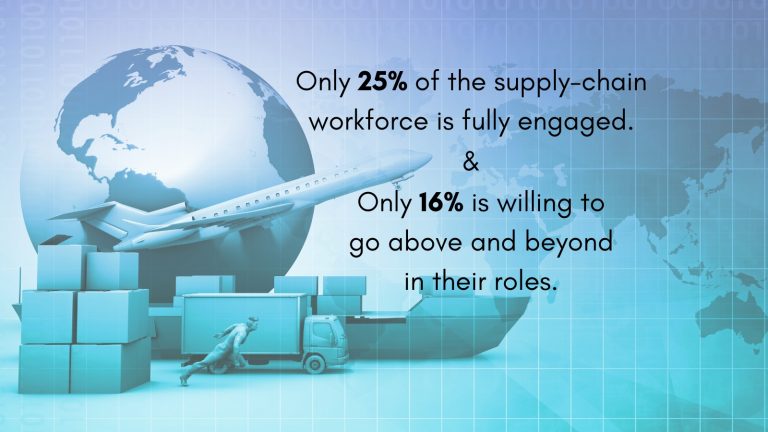Is the supply chain becoming more resilient since the early days of the pandemic? What is the missing link? Do we need more workers? More technology? Better processes? Or something else altogether to fix the broken pieces of our supply chain?
Here at Connected World, we have looked at the inner workings of the supply chain for decades, in order to understand the impact of cyber threats, labor, geopolitical tension, climate change, rising material prices, transportation complexity, available capital, market changes, sustainability, and so much more.
The objective is always to understand the long-term cost such delays or breakdowns can have to move toward greater resilience. Technology can certainly help us get there. Gartner suggests by 2027 more than 75% of companies will have adopted some form of cyber-physical automation within their warehouse operations.

Other technologies to watch include AI (artificial intelligence) and machine learning. Additionally, many technologies with “high” impact will also mature within the next few years, creating an accelerated market for increasingly capable smart, autonomous and mobile robots, and drones—although mobile robots will far outpace drones in the next three years, according to Gartner.
Technology certainly plays a huge role in building a stronger supply chain, but so, too, do people, and process. Gartner research suggests only 25% of the supply-chain workforce is fully engaged and only 16% is willing to go above and beyond in their roles. Turnover is high too, at 33% today, compared to pre-pandemic numbers.
The geopolitical risks are certainly ones that are weighing heavy on the minds of today’s supply-chain executives. As a result, reshoring—bringing a company operation back to the area it was originally located—and nearshoring—returning to an area that is nearby—are both gaining greater momentum today, but these efforts are only going to be compounded by the fact that there aren’t enough workers to do the work safely and securely. We will need the people to do these efforts successfully.
To address the structural risks from geopolitical conflicts and natural disasters on the supply chain, last year’s efforts to build redundancies into the supply chain will not be sufficient. A major makeover is required, as the sector needs to spread its industrial footprint across multiple geographies. What is it taking to nearshore and reshore? Let’s find out.
How would you describe the state of the supply chain today?

“The supply chain has always been a balancing act. Whether it is cost and efficiency, customer service vs. profitability, or in modern times resiliency vs. risk. And now, we are increasingly seeing sustainability move into the already crowded field. Supply chains are a huge part of the problem when it comes to emissions, circularity, and inequality, and are therefore a great area to focus on when looking for solutions. Businesses require end-to-end visibility and collaboration with trading partners, as well as a well-rounded understanding of their unique supply chain model. Employees, stakeholders, vendors, and decision-makers must understand how the supply chain performs, which suppliers and logistics providers contribute to a greener business model, and what changes can impact the rest of the business.” – Richard Howells, vice president of solution management, ERP, finance, and digital supply chain, SAP

“Supply chains are much more fluid today than during much of 2020-2022, but that is partially due to demand for goods being down. Pricing power in transportation markets shifted from carriers to shippers while freight demand and carrier capacity have rebalanced.
Since supply chains are operating with more fluidity and available transportation capacity, disruptions do not have an exaggerated impact on supply chains, as we saw in 2020-2021. In addition, sustainability is here! Shippers, suppliers, logistics providers, and every other stakeholder in the supply chain are now feeling the pressure to track, monitor and improve their carbon emissions, as well as set sustainability targets.” – Dave Tuttle, vice president, data intelligence, Breakthrough
How much progress have we made since it crumbled in 2020?
“Over the past three years, the risks and shortfalls in our global supply chains have been brought to the forefront across all industries. Supply chains are now recognized as central to business survival, success, and growth, rather than an opportunity to just reduce costs. One key to a resilient supply chain is digitalization. With a more digitalized supply chain, you can handle disruptions better, faster, and at a lower cost. By investing in supply chain technology to digitalize processes, such as AI (artificial intelligence) the (IoT) Internet of Things and robotics, companies have been able to improve visibility agility and resilience across the supply chain. By digitally linking all the trading partners your business relies on, you’re in a much better position to anticipate disruptions and take appropriate actions needed to keep serving your customers. The goal is to transform fragmented supply chains into agile, collaborative networks for supply, logistics, asset management, and service – all connected by dynamic workflows with real-time data to increase the pace of business.” – Richard Howells, vice president of solution management, ERP, finance, and digital supply chain, SAP
“Supply chains are becoming more resilient to disruption and in sync with each other. They have evolved to mitigate risks for a few key reasons. First, regionalization is increasing with businesses opening more supply chain facilities to be closer to end consumers. Secondly, is the demand for technology and innovative solutions. Technology has been elevated and there are more options for technology providers than ever before. Investment in supply chain technology continues to increase as well. Lastly, sustainability continues to rise in priority and is increasingly being examined by boards. Breakthrough’s recent in-house survey shows 59% of transportation leaders plan to add EVs to fleets by the end of 2023, and 42% say pressure for more sustainable transportation is coming from the C-suite.” – Dave Tuttle, vice president, data intelligence, Breakthrough
Are nearshoring and reshoring gaining traction? If so, in what way?
“Bringing manufacturing closer to home is a more attractive alternative to the offshoring business operation model. Although offshoring provides numerous benefits — including access to a more diverse range of skills, proximity to raw materials and low labor costs — numerous supply chain crises have combined to highlight the inherent risks in our global supply chains. Building a risk-resilient supply chain involves diversifying and establishing strong relationships with key suppliers, monitoring and analyzing supply chain data in real-time, and investing in technologies that can enhance supply chain visibility and agility. SAP works with its partners to provide efficient solutions to business operations. Nearshoring is one tool in building a risk-resilient supply chain and SAP recognizes the importance of taking cost, speed, profit, customer service, and risk into consideration. This can be accomplished by connecting every process, contextualizing every decision, and collaborating with partners without obstacles. However, nearshoring is not the end all be all to solving supply chain complexities, just one piece of the larger puzzle.” – Richard Howells, vice president of solution management, ERP, finance, and digital supply chain, SAP
“Nearshoring is gaining a lot of traction. Mexico and Canada are now the largest importers to the U.S., overtaking China’s position. Mexico is the largest importer at 15.7% and Canada closely follows at 15.4%.
The largest category that shifted towards Mexico is machinery and electronics. China’s share of total trade with the U.S. dropped to 10.9% percent, down from its peak of 16.3% in 2017. ‘Friend shoring’ is also gaining some traction and trade with the EU, UK, and other Asian nations (India, Thailand & Vietnam) increased as well. Shifting trade is driven by investment and increased capacity along the Gulf and East Coasts of the U.S. Shorter supply chains will remove some risks in importing from Asia. Additionally, we’ll see the continued utilization of established supply chains generating sub-components that may then become part of a shifted manufacturing or assembly process.” – Dave Tuttle, vice president, data intelligence, Breakthrough

Is what we are doing today going to be enough for the workforce of tomorrow?
“The future will bring a greater focus on companies using IOT, AI and other technologies within their factories, across the supply chain of smart assets, and into the hands of consumers and customers leveraging the smart products and devices it enables. Technology will also help alleviate worker shortages and improve retention by improving the retention, productivity and decision making of existing employees, and attracting new talent with state-of-the-art tools. And as the degree of automation increases, it frees up the workforce from repetitive tasks, and allows them to focus on more complex problems and decisions that require human interactions.
The worker of tomorrow is digitally connected and has access to information at their fingertips, 24/7 in their personal life and expects the same connectivity and access to information in their work environment.” – Richard Howells, vice president of solution management, ERP, finance, and digital supply chain, SAP
“The workforce of tomorrow will be supported if the level of investment committed to supply chains today is executed with their needs in mind. Ambitious sustainability goals, for example, should consider the effects of protectionism and possible barriers to trade on the ultimate cost of decreasing emissions. Longer-term planning requires honest risk assessment, particularly to ensure firms’ most valuable assets, their people, can reach their productive potential. Business leaders should utilize the change being driven within the supply chain to provide opportunities that are more appealing and sustainable for the workforce of tomorrow.” – Dave Tuttle, vice president, data intelligence, Breakthrough
What steps do we need to take next to create a more resilient, sustainable, and secure supply chain?
“As we look to the future, there are a few key emerging themes that leaders across industries should keep in mind as the supply chain remains top of mind.
- Sustainability should remain top of mind for all. Most companies’ goals or mission statements center around sustainability. In fact, many believe the global supply chain is a key contributor to the climate crisis. Therefore, emphasis on global supply chain offers businesses many opportunities to meet their sustainability goals. By prioritizing green business practices, companies will be able to contribute to the sustainability of the global supply chain directly. As ESG initiatives continue to be of importance across industries, companies will look to their supply chains for answers, and increase pressure on their partners to think green when it comes to factors like sourcing, manufacturing, and shipping.
- Supply chain resiliency is a must. To remedy the past 3 years of disruption and global unrest, companies need to identify risk mitigation strategies. They should revisit strategies for on-shore, near-shore, and off-shore to be closer to the actual demand. Look at alternate sourcing strategies for key materials to reduce supply chain risk by identifying alternate suppliers in different geographical locations to reduce dependencies on a single source of supply. And they should rethink inventory optimization strategies to identify decoupling points and postponement strategies, to better position the right materials, intermediates, and finished products across the supply chain. p Organizations will also need to improve collaboration and increase visibility with suppliers, logistics service providers, contract manufacturers and other key trading partners.
- Increased visibility within the global supply chain. To be more risk-resilient and sustainable you must start by knowing the current situation. How can leadership predict and respond to the supply chain without a clear line-of-sight into what’s happening across various business units and partners? To meet sustainability initiatives, companies must be able to pinpoint where emissions and waste are in the supply chain, or where slave labor and inequality is occurring across the business network and track it to translate the findings into actionable next steps.” – Richard Howells, vice president of solution management, ERP, finance, and digital supply chain, SAP
“True supply chain leadership lies in our ability to incentivize and enable circular supply chains, where a high value is placed on eliminating waste. It’s about optimizing every link in the chain, transcending silos and unlocking untapped capacity. Business leaders should get behind policies that remove obstacles hindering these transformative shifts in our supply chains.” – Dave Tuttle, vice president, data intelligence, Breakthrough
“We must strive to make Net Zero Freight “business as usual.” To achieve this mindset in daily practice, we must take the following steps:
- Create accurate and relevant data from current operations to enable one to measure, manage and achieve hard targets.
- Ensure the use of the most efficient assets from carriers to reduce emissions.
- Optimize routes and load efficiencies while tracking KPIs in more detail.
- Select alternative fuels and technologies to pilot and implement through collaboration.
- Neutralize any remaining emissions through valid offsets and/or insetting opportunities.

We know it will take time, and technology won’t solve everything, but we must start now and build upon best practices as good logisticians and operators.” – Peggy Murphy, PhD – vice president sustainability, PSA BDP


